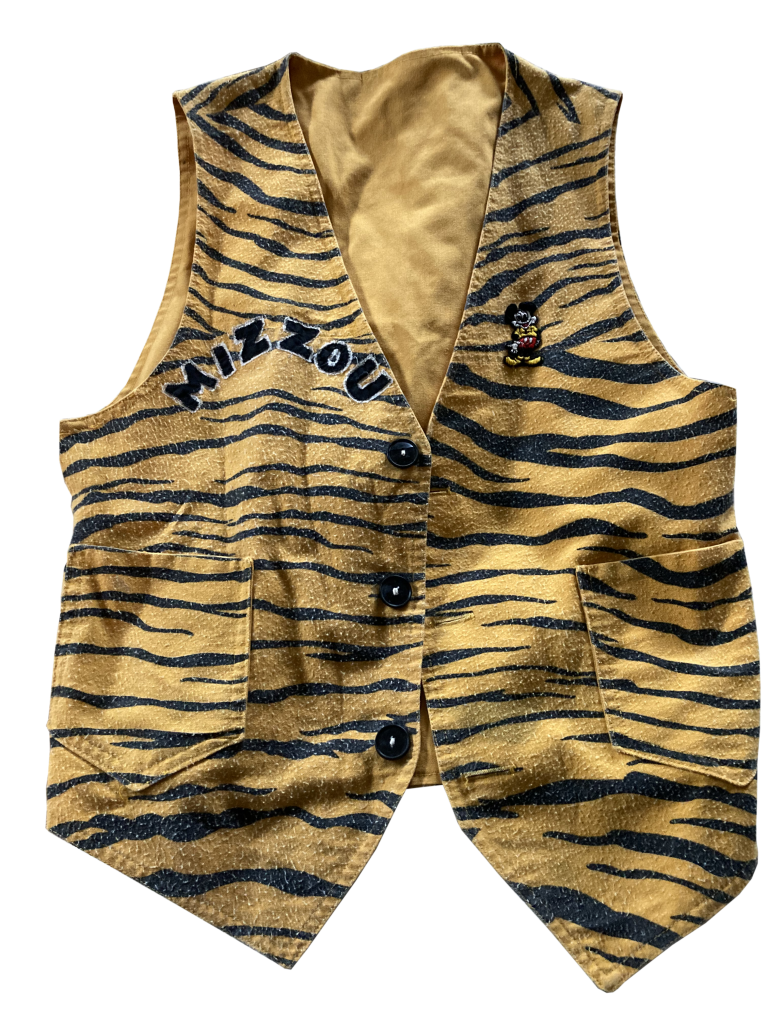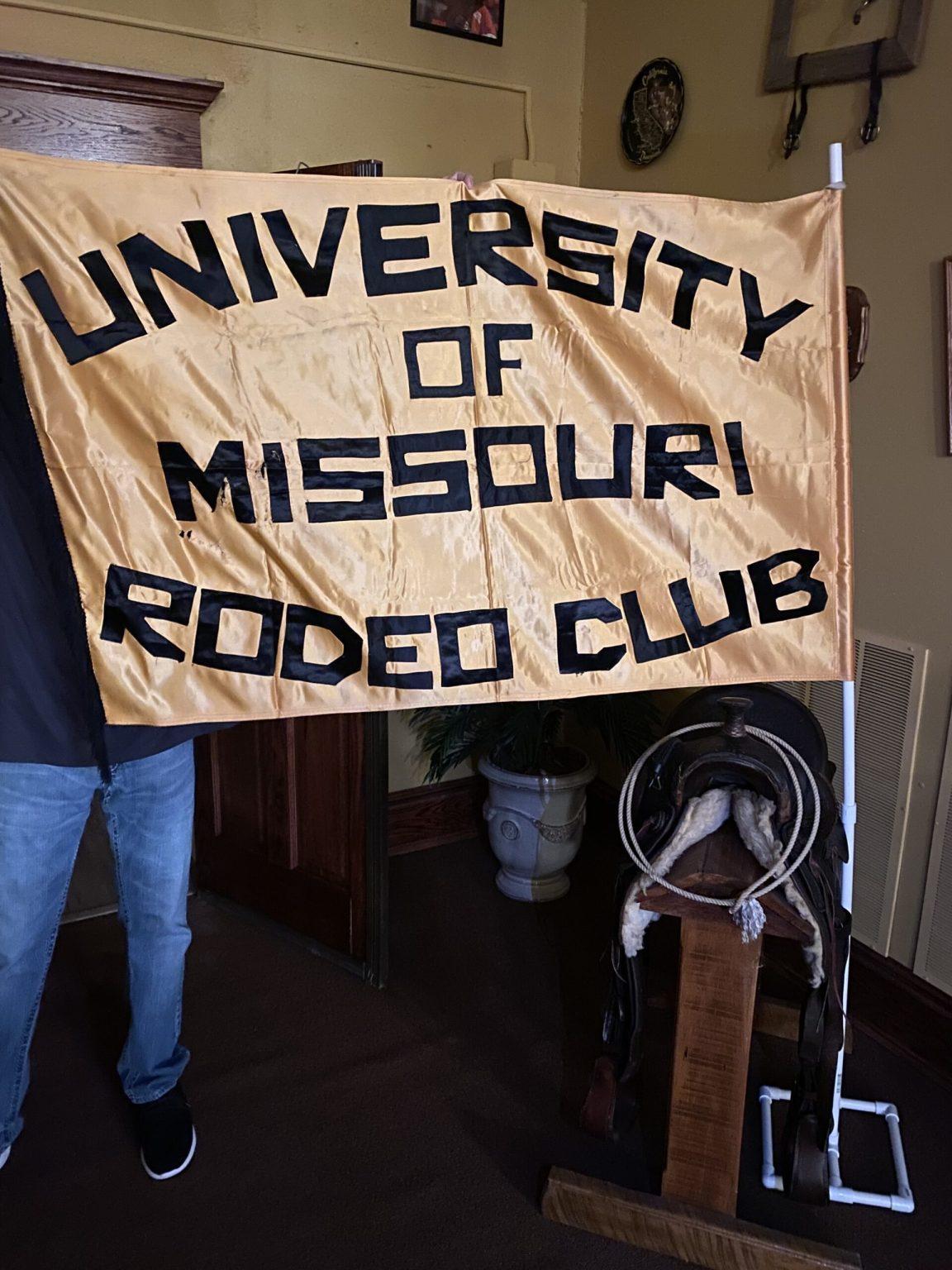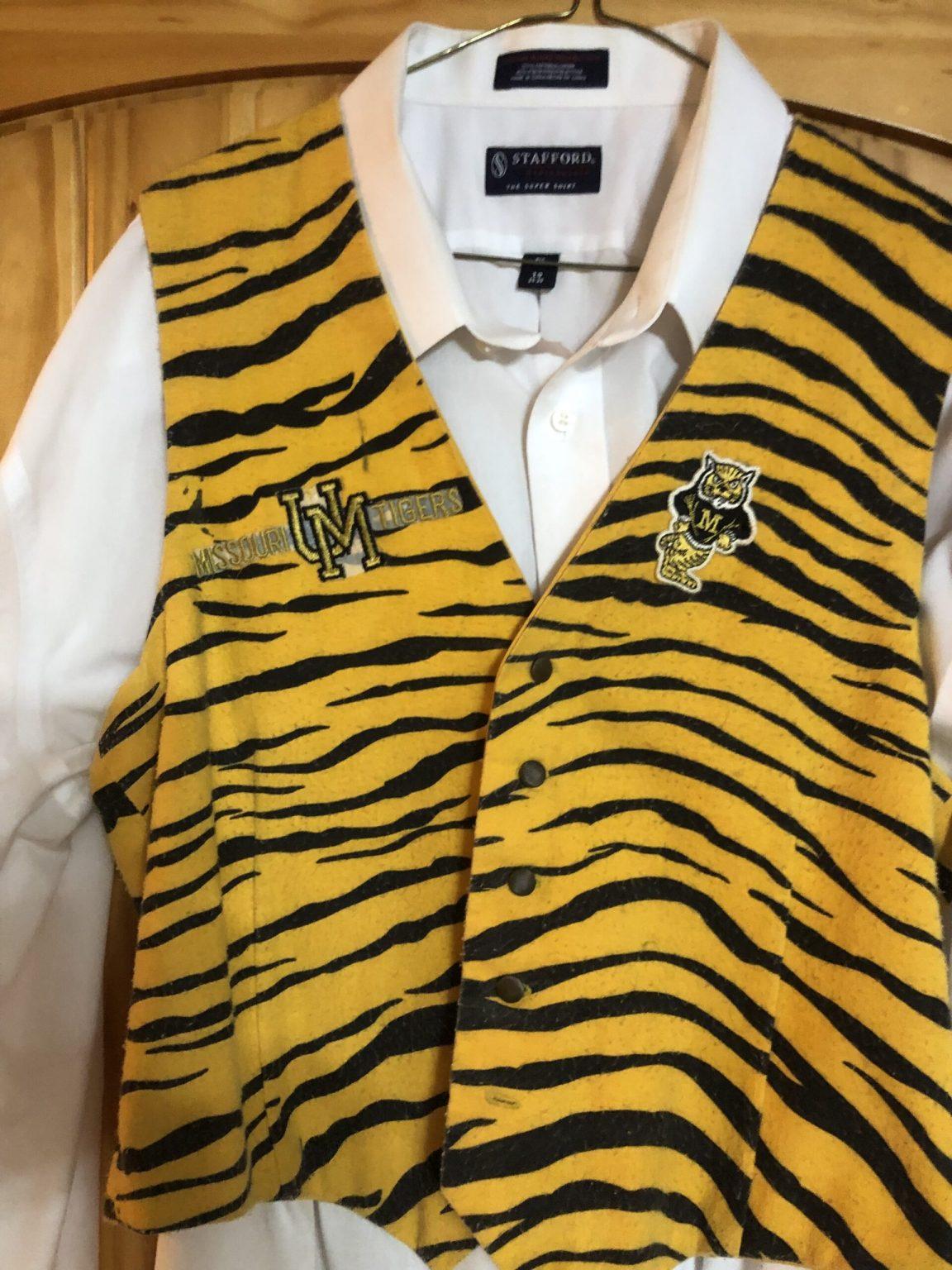Dodging barrels and tearing through an arena of screaming fans on horseback isn’t typical for an MU freshman. But for Taylor Watts, this is a normal weekend activity.
Watts has found a deep-rooted community in a tradition that many MU students have never thought about — Missouri rodeos.
Though she initially didn’t view MU as a place where her interests would be shared, rodeos are what ultimately influenced Watts’ decision to come to the university.

“Originally I really didn’t see Mizzou as a place for [agriculture] students, or more country students,” Watts says. “The rodeos and the people I talked to [at MU] really made me realize that there is a community here for that.”
Watts says that within her first few weeks on campus, she had found people with similar interests as hers, connecting home and school. Despite this shared interest amongst students, there is no rodeo team or any other rodeo-related student organization on campus.
Although rodeos have evolved into action-packed, entertaining events, including riders gripping on to a bucking bull and attempting to stay mounted for a mere eight seconds, the sport originated from cattle industry practices in the American West. For many, rodeo involvement is entangled with family cultures spanning generations.
Conventional rodeos involve individuals specializing in specific events, and often traveling from rodeo to rodeo to compete. Some events are held in small teams, however.
Every rodeo is different, and whether one is sanctioned by an organization or rodeo association can determine which events and livestock are present. Traditional events include bull riding and barrel racing, which sophomore Morgan Branson cites as the most well known. Saddle bronc riding, bareback bronc riding, steer wrestling, calf roping and team roping are among other events.

Rodeo’s absence in Columbia
MU previously had a rodeo team, but it has since been disbanded. Without a direct rodeo outlet, some students are unable to compete as frequently as they do during the summer, or as they did before enrolling in the university.
Juniors Caleigh Grote and Sydney Burkemper are both unable to currently identify a flourishing, tangible rodeo community on campus. Burkemper identifies other colleges in Missouri that have strong rodeo teams, despite the lack of one at MU.
“Unfortunately, I feel like we have a lot of potential here and there’s a lot of us that are involved, but there’s not many programs to get [involved] in here,” Burkemper says.
While there are no opportunities on campus to run for rodeo royalty, Branson competes for a title annually at her hometown rodeo. Tradition is what motivates Branson, a common thread running through rodeo culture. All of her female family members have ran for and won the rodeo queen title.
Watts, similarly to Burkemper, got involved in the sport when she got her first horse in 2018. She began barrel racing, an event in which a rider and their horse attempt to run a course in the least amount of time while running around pre-set barrels. Though she is unable to maintain the eight-hour workweek with her horse that she did prior to her freshman year, she still goes home on weekends to practice whenever she can.
Rodeo’s history at MU
“I still treasure those times back at the university on the rodeo team,” Curtis Long, who graduated from MU in 1986, says. Long speaks fondly of his time competing with the MU Rodeo Team under advisors Wayne Loch and Bill Slemp.

Long and Trent Bushner competed with the rodeo team from 1981 to 1985, when the team was sanctioned by the National Intercollegiate Rodeo Association and competed in the Ozark Region.
Long remembers participants traveling independently to compete in rodeos throughout the year at other schools, both near and far.
Expenses were shared between the university and participants, with team members covering the majority of the cost, as it was not considered a varsity sport.
Each participating school had the option to sponsor their own rodeo, and MU hosted theirs annually at the Trowbridge Livestock Center. Bushner has vivid memories of hosting the rodeo each spring, and remembers the fun of advertising for the event and fundraising to pay for livestock, announcers, judges and other expenses.
Competitors competed for points at each rodeo, attempting to earn enough to qualify for the national finals. The top two athletes in each event, or teams of the region, would qualify, Bushner says. According to Craig Philpot, who graduated from MU in 1985 and was a “steer wrestler” on the school’s rodeo team, says there were usually 12 colleges competing at any given NIRA rodeo.
MU had both a rodeo club and a rodeo team; they were separate organizations and not every student in the club competed with the team, but the club was “very supportive” of the team and even raised money to sponsor MU’s annual rodeo.
Philpot believes the organizations disbanded in the late 1980s due to a decline in interest within the student body. He says this trend of dwindling participants began before he enrolled at MU in 1983, as the rodeo team’s numbers sat around seven athletes when he competed, in comparison to teams of 20 to 30 sponsored by other colleges.
“We were outnumbered at every rodeo we went to,” Philpot says.
Similar to current students competing in rodeos, Long recalls most people on the team having grown up with the sport, leading to a natural transition to competing at the college level.
According to Long, the school’s rodeo team was well known in “ag circles,” but not as much as other sports on campus. The schedules of rodeo athletes were also not as regulated. “Let’s just say it was a non-traditional practice schedule,” Long says.

Bushner adds that the team was limited on what they could practice because of a lack of access to the appropriate facilities and livestock.
Philpot had a unique path to the team, having joined with no prior rodeo experience. He cites the team’s unique training methods and lack of faculty coaches as having a notable impact.
“Missouri didn’t train me to do this, it was all the guys on the team that helped me out and gave me pointers,” Philpot says, adding that the team became a “family.”
He also remembers a camaraderie amongst competitors, citing athletes from other schools allowing him to use their horses during rodeos. “You’re all cowboys and you’re all friends,” Philpot says. “I would have other schools helping me compete against them.”
Philpot competed in rodeos professionally for 15 years after graduating from MU. Being trained by his peers led him to find success in the Missouri Rodeo Cowboys Association, the International Professional Rodeo Association and the American Cowboys Rodeo Association, where he noticed the same comradery among athletes.
Bushner also found a community within the club and team, which had long-term implications on his life. “[Rodeo] made me a lot more self-sufficient,” he says. “It taught me a lot about being on my own and growing up.”
Having qualified for the national finals in bareback riding all four years of college and placing fifth his freshman year, Bushner remembers these competitions as an opportunity to compete with the best in the college division from around the country.
After graduating from MU, Bushner attempted to compete professionally with the Professional Rodeo Cowboys Association before sustaining a career-ending injury.
“The rodeo community is a very small community, and I’ll always cherish that,” he says. “That’s probably the hardest part was when I got torn up so bad and decided it’s time to hang it up, not being around those people.”
Bushner says the friendships he built with teammates during his college days persist to this day.
Rodeo’s uncertain future
When Branson looks to the future of rodeos, she is unsure how much longer they’ll remain relevant, or economically feasible to compete. She cites many factors for this decline, including a lack of awareness among the general public.
“If more people were more knowledgeable about [rodeos] and not just the people from small towns… [they] could become more popular again, so that all of this opportunity for other people wasn’t just going down the drain,” Branson says.
Branson also believes widespread debates on humane treatment of animals come into play. She attributes the belief that rodeos abuse their animals to a lack of understanding.
Burkemper says that she and other rodeo competitors treat their animals as if they are part of their families. She cites lack of knowledge on what goes on when animals are not competing as a factor contributing to public concern.
“We’re putting more time and effort into making sure that they’re healthy and feeling their best, more than we sometimes take care of ourselves,” Burkemper says.
Branson believes that misconceptions about rodeos stem from simply not having an inside perspective.
“A lot of people from the larger towns don’t know as much about it just because they don’t have the experience with it,” Branson says.
While Watts agrees, she does believe that some changes could be advantageous.
“There are absolutely rodeos that do need to be reorganized in a way that is more beneficial for the animal,” Watts says.
The presence of rodeo culture in mainstream media has also left the general public with a singular image of what kind of person attends a rodeo. Watts emphasizes that this could not be further from the truth, especially when it comes to varying belief systems.
“Some people are kind of turned off to the western community in general, just based on… political ideologies and such, when there’s so much more of a variety than people would have ever assumed,” Watts says. “It’s a really diverse community.”

Watts herself feels that the stereotype of someone who competes in a rodeo — namely what they wear, and how they act and talk — doesn’t exactly apply to her. She explains that rodeo competitors are not always defined by their looks, saying “there’s people of really alternative styles that participate in rodeo as well.”
Branson agrees, fighting the narrative that rodeos are exclusively for people from small towns by explaining that people from any geographical background can be part of the rodeo community.
Finding meaning in competition
Missouri rodeo culture is widespread, and competing is a year-round commitment for many. For Branson, the extensive hours of training are worth it. The Warsaw, Missouri native brought her horse, Pete, to Columbia with her to continue her training regimen throughout the school year.
“When you’re in the arena, it’s a really different feeling,” Branson says. “It’s just one of those things that makes you feel like you’re bringing people together.”
For Burkemper, competing in rodeos is more than just a hobby, or even a series of goals to meet. “It’s a way of life that you… just get addicted to,” she says.
Shelby McMurry, a Sparta, Missouri native and rodeo competitor, agrees.
“It’s everything to me,” she says regarding the rodeo community. McMurry, who does not attend MU, and her traveling partner journey to compete in rodeos across the state, hoping to make the expenses worthwhile.
Even without rodeo involvement opportunities on MU’s campus, Grote still feels the uniting effects of the culture that she — and so many others — grew up in.
“It’s a way to pull people together that ordinarily wouldn’t be there together,” Grote says.
Burkemper identifies the rodeo community as a very open one. She urges people outside of the rodeo world to ask questions before coming to their own conclusions, saying, “instead of making assumptions about what we do, just ask us.”
For many, rodeo is not merely a sport, but an extension of family, community and home. Rodeo culture is deeply ingrained in both MU and Missouri history, yet there is no outlet on campus for students to express this part of their identity.
Edited by Lucy Valeski | [email protected], Edited by Egan Ward | [email protected]
Copy edited by Sterling Sewell and Lauren Courtney







